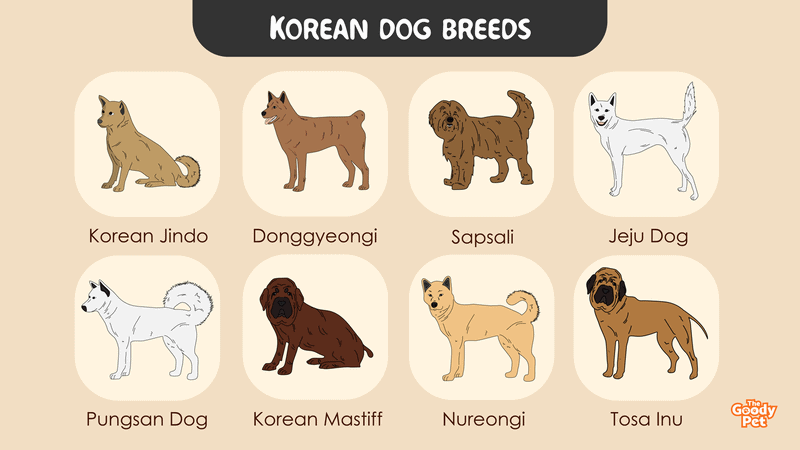Unless you have spent some time living in Korea, there’s a good chance you haven’t heard of some of the country’s indigenous dog breeds.
This list includes the Jindo, the Nureongi, and the Sapsali. While each of these breeds has its own unique features and temperament, they all share one commonality: they are all adored by Korean dog lovers.
If you are interested in learning more about these eight Korean dog breeds, keep reading!
8. Tosa Inu
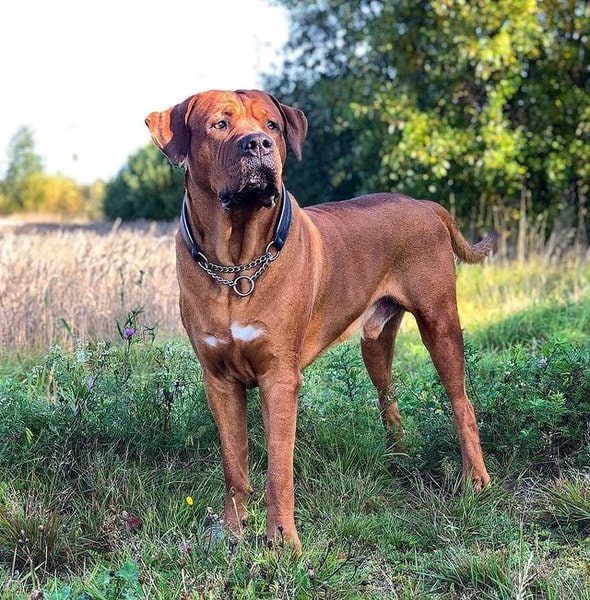
Technically speaking, the Tosa Inu is actually native to Japan. However, it is very popular in South Korea mainly as a source of meat.
The dog is known for its large, muscular build. This came in handy when it was used as a guard dog and for dogfighting. However, it is also unfortunately what makes it such a hit in South Korean dog meat markets.
Their aggression and high maintenance also discourage many South Koreans from considering them as companion pets.
7. Nureongi
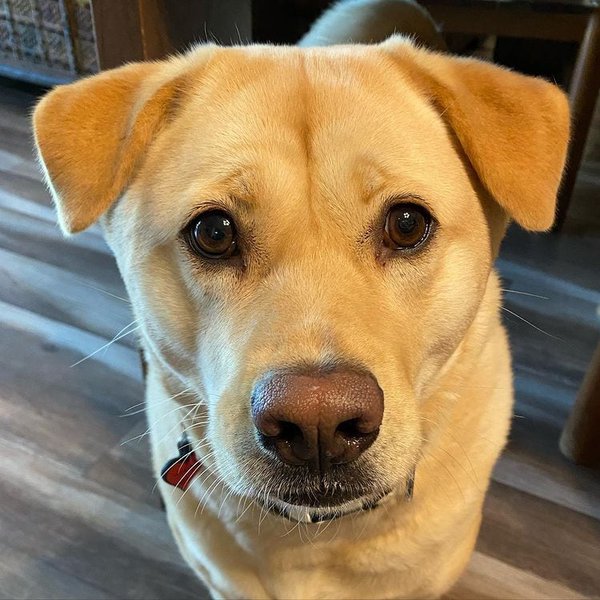
The Nureongi is the most common dog breed kept for meat purposes in Korea. Their popularity in this use is so much that almost all of them are found in dog meat markets. However, as humane societies both local and international fight to change the dog eating culture in the country, more and more of these little doggies are being adopted as family pets.
With their beautiful, yellow coats, unwavering loyalty, and generally great interactions with kids and strangers, it is only a matter of time before they capture the hearts of South Koreans.
6. Korean Mastiff
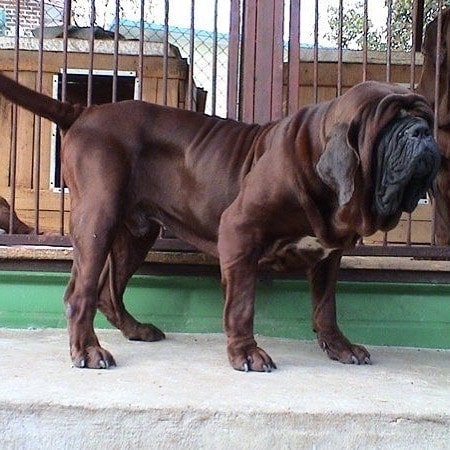
Locals refer to this beautiful beast as the Mee Kyun Dosa. The dog is known for its large build with its massive head. It also has a characteristic look with saggy and wrinkly skin folds around the face and neck area.
These beastly doggies are known for their gentle manner, especially with children. Despite being quite rare, they are relatively popular for use as family pets in South Korea and other parts of the world.
5. Pungsan dog
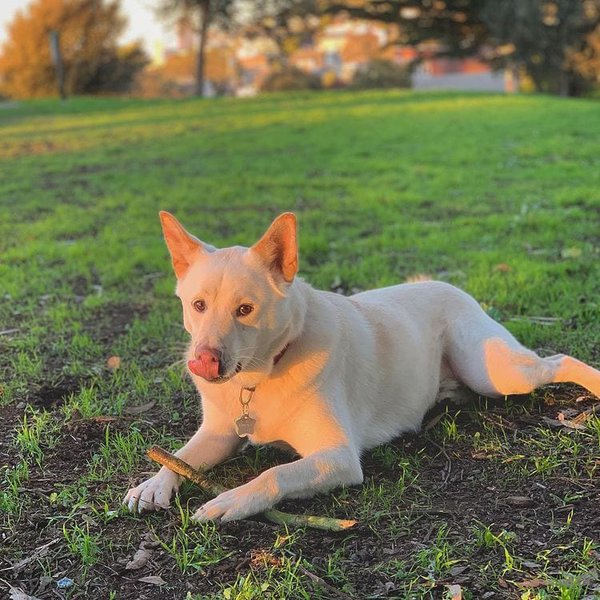
This is yet another breed that though not native to South Korea is very popular in the country. The Punsang dog is actually from North Korea where it was kept as a hunting dog.
The distant relative to the Siberian Husky has a similar build to its popular cousin with the medium to large frame and spitz-like fur and facial features.
However, these doggies are considered a bit more unruly and are quite difficult to train.
4. Jeju Dog
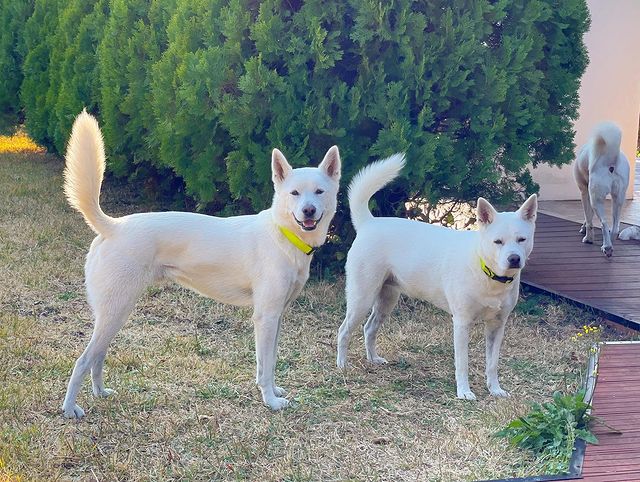
This is one of the rarest breeds on our list. In fact, it was quite close to extinction in the late 1900s and has still not fully recovered with less than 100 purebred versions of the breed in the world as of 2010.
Something interesting about the breed is the aesthetic differences between the male and female Jeju dogs. The males have more fierce aesthetics likened to the wolf. The females on the other hand have a more curious expression and have facial features similar to those of a fox.
3. Sapsali

These dogs hold a special place in Korean culture and folklore. They are believed to help with dispelling ghosts and scaring away evil spirits.
Whether or not these furry beauties have supernatural powers, there is no denying the fact that they are super cute with their shaggy coats and gentle facial features.
They also have awesome personalities and are popular for their devotion to their human owners as well as their gentleness and patience with children and other pets.
2. Donggyeongi
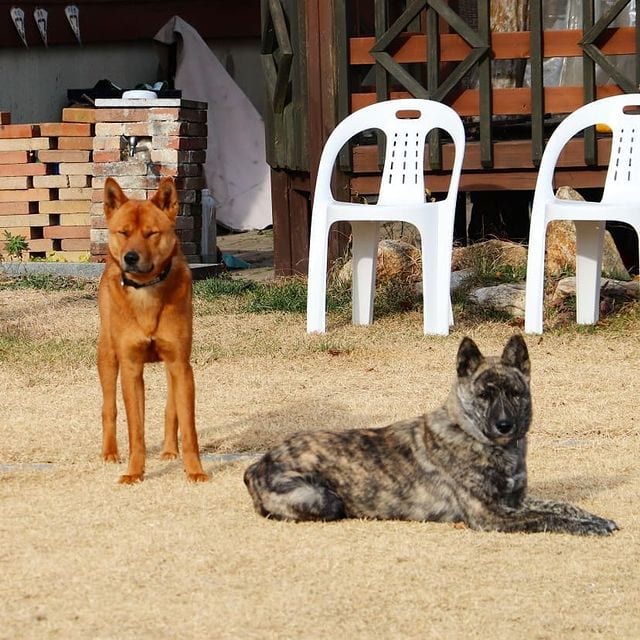
The Donggyeongi is famous for its bobtail. While this may inspire affection and admiration in other parts of the world, it has only landed the South Korean breed in hot water among locals. This feature is considered undesirable as South Koreans believe it to be a source of bad luck.
This attitude has hurt the Donggyeongi so much over the decades with everything from mass slaughtering for intentional elimination to their only value being considered their meat and skin.
1. Korean Jindo
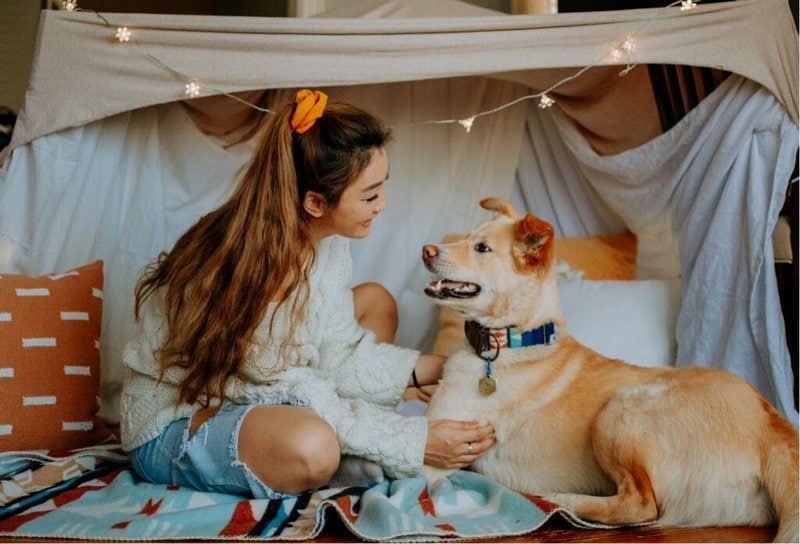
The Jindo dog originates from the island county of Jindo, hence its name, and can be widely found outside the island on the main Korean peninsula, as well as in Korean communities around the world like in the US.
Having the status as one of the Natural Treasures of Korea, the Jindo dog is highly loved by the people of Korea and has been recognized as an official breed by various kennel clubs around the world in the late 1990s and early 2000s.
Related Questions
Do Koreans Eat Jindo?
Despite being one of the most popular breeds in South Korea, the Jindo dog is sometimes kept for meat. This is quite ironic as they are considered the national dog of the country. For the most part, however, they are kept mainly as guarding and hunting dogs in rural settings or as service dogs in the police and military forces.
What Dogs Are Banned In South Korea?
There are no dogs banned in South Korea. However, there are strict regulations about ownership and the public presence of a few breeds that are considered dangerous. This includes breeds like the Tosa Inu, Pitbulls, and Rottweilers which are prohibited in most public spaces, where there may be young children.
Can You Take A Jindo Out Of Korea?
It is possible to take a Jindo out of Korea. This is especially if it is a breed from the mainland region of the country. Here, export regulations are a bit more relaxed, allowing Jindo fans to have the smart and loyal puppies shipped out to their home countries around the world.

